- Unit1 Nov 2012
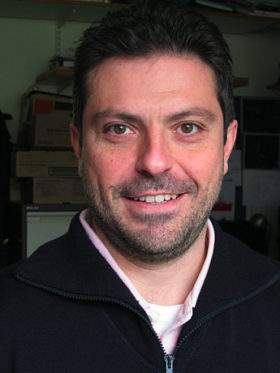
Dr Marco Canepari visits Marco Capogna’s lab to optically record back-propagating action potential with calcium and voltage-imaging in interneurons of hippocampal slices. This ongoing collaboration joins visitor’s expertise in high-resolution imaging techniques with the expertise of Marco Capogna on synaptic inhibition and interneuron physiology. Marco Canepari is a senior scientist at the Grenoble Institute of Neuroscience, Inserm, France. His visit to Oxford is supported by a short-term travel grant by the Physiological Society UK.
- Unit25 Oct 2012
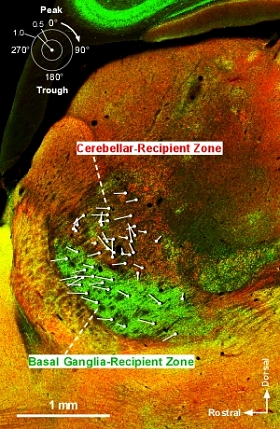
Kouichi C. Nakamura, Andrew Sharott and Peter Magill at Oxford addressed how the firing rates and patterns are different between neurons in the basal ganglia-recipient zone (BZ) and cerebellar-recipient zone (CZ) of rat motor thalamus across brain states in vivo. Neurons of the motor thalamus mediate basal ganglia and cerebellar influences on cortical activity. To elucidate the net result of γ-aminobutyric acid-releasing or glutamatergic bombardment of the motor thalamus by basal ganglia or cerebellar afferents, respectively, they recorded the spontaneous activities of thalamocortical neurons in distinct identified "input zones" in anesthetized rats during defined cortical activity states. Unexpectedly, the mean rates and brain state dependencies of the firing of BZ neurons CZ neurons were matched during slow-wave activity (SWA) and cortical activation. However, neurons were distinguished during SWA by their firing regularities, low-threshold spike bursts and, more strikingly, by the temporal coupling of their activities to ongoing cortical oscillations. The firing of neurons across the BZ was stronger and more precisely phase-locked to cortical slow (∼1 Hz) oscillations, although both neuron groups preferentially fired at the same phase. In contrast, neurons in BZ and CZ fired at different phases of cortical spindles (7-12 Hz), but with similar strengths of coupled firing. Thus, firing rates do not reflect the predicted inhibitory-excitatory imbalance across the motor thalamus, and input zone-specific temporal coding through oscillatory synchronization with the cortex could partly mediate the different roles of basal ganglia and cerebellum in behavior.
- External24 Oct 2012
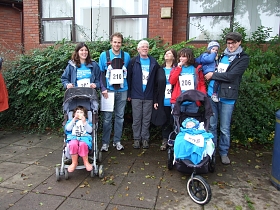
The extended Bolam Family attempted to do the 8 mile Oxford Parkinson's Walk on Sunday. We all started off very enthisiastically, but the age range of 3 weeks to 59 years got the better of us, so after two miles, short-cuts were introduced, lunch taken and some of the very young members and one of the new mothers peeled off. Four of us completed the walk including 3 month old Tarn.
Any sponsorship would be gratefully received!
http://www.justgiving.com/jpbolam
- Unit15 Oct 2012
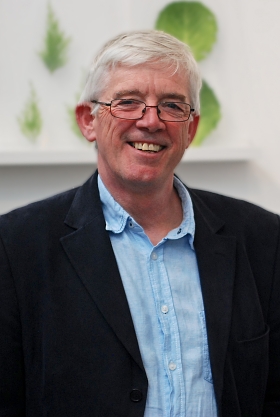
In September 2012 the Council of the British Pharmacological Society approved the award of Fellowship of the British Pharmacological Society to Paul Bolam.
Fellowship of the Society is an honour which is reserved for the Society’s most eminent and longstanding members. Among the BPS’ 3000-strong membership, about 100 Fellows have demonstrated distinction and peer recognition in Pharmacology through their work, publications and contributions to scientific meetings, education and policy.
- Unit12 Oct 2012
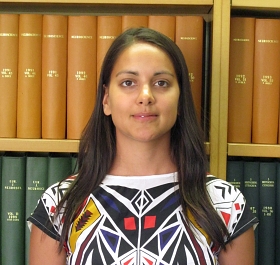
Dr. Emilie Syed joins the Unit as a visiting scientist to advance a collaborative project between the Magill group and those of Prof. Peter Brown and Dr. Mark Walton at the University of Oxford. Emilie’s research in the Unit has the broad aim of defining how dopamine release dynamics correlate with striatal population activities during behaviour. To achieve this, Emilie is combining chronic electrophysiology and voltammetry techniques.
Emilie graduated from King’s College London in 2001 with a B.Sc. in Pharmacology. She has a long-standing interest in the basal ganglia since she undertook her first research project in Prof. Peter Jenner’s Neurodegeneration Research Group, studying the morphological changes in dopaminergic terminals in striatum in Parkinson’s disease. In 2004, she obtained her Ph.D. in Natural Sciences in Prof. Andreas Engel’s Research Unit at Hamburg University, where she studied functional connectivity between sensory areas of cortex, striatum and thalamus. Emilie joins us now from the Université Bordeaux 2 where she worked on the pathophysiological role of oscillatory activity in the subthalamic nucleus in Parkinson’s disease with Dr. Abdelhamid Benazzouz and Dr. Thomas Boraud.
- Unit12 Oct 2012

Thomas David Fischer joins the Capogna lab as a student visitor to help with the anatomical characterisation of recorded neurons of the amygdala. David is a medical student at the University of Innsbruck. In Oxford, he will be also involved in clinical rotations (8 weeks each) with Prof. Chapman (Dept. Internal Medicine, John Radcliffe Hospital) and Prof. Peter Brown (Dept Clinical Neurology, John Radcliffe Hospital) supported by the Erasmus Program.
- Unit12 Oct 2012
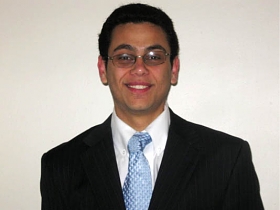
We are delighted to welcome Mr. Farid Garas back to the Unit as a full-time student in the Magill Group . Farid recently completed a very successful Final Honours School research project under the supervision of Drs. Andrew Sharott and Peter Magill, as part of his BMBCH medical degree at the University of Oxford. Farid is now taking time out from his medical studies to undertake research towards a D.Phil., for which he was awarded a prestigious Clarendon Scholarship as well as a Partnership Award from New College, Oxford. Farid will use an advanced combination of immunohistochemistry, electrophysiology and optogenetics to define the molecular architecture and functions of striatal interneurons.
- Unit12 Oct 2012
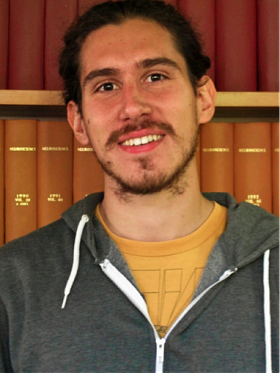
Marco Bocchio joins the Capogna lab to study functional interactions between the amygdala and hippocampus for his DPhil. Marco awarded a BSc in Medical Biotechnology and a MSc in Neurobiology at the University of Pavia, Italy. He then moved to Rotterdam with Prof. Chris De Zeeuw for an Erasmus exchange project (2010) and worked as Research assistant in the Wolfson Institute for Biomedical Research, UCL, with Prof. Michael Hausser (2010-2012).
- Unit12 Oct 2012
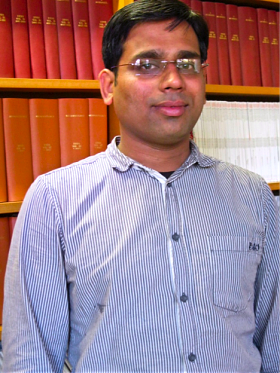
Prakash Guna has joined Dr Jeff McIlhinney' group as a Research Technician.
He obtained an MSc in Biotechnology from University of East London at September 2007. After completing this he joined Prof Ilan Davis' lab at Department of Biochemistry, University of Oxford, as a Research Technician. Here he was working on the project of ‘mRNA localization at the neuromuscular Junction in Drosophila’. The main focus of the research was to identify localized mRNA in the neuromuscular junction of Drosophila and the work involved fly genetics, molecular biological techniques, microscopy and overall lab maintenances as well as supervising the fly media facility that supplies 12 different groups in the University. He was promoted twice during his tenure and was appointed as a Senior Research Technician in 2010 and in early 2012 appointed as a Drosophila Genetic Technician.
- Unit9 Oct 2012
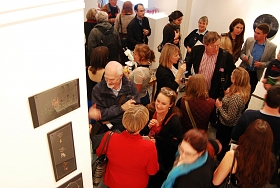
The private view of A Nervous Encounter took place on the evening of Friday 5th October. With over 70 invited guests, the gallery was buzzing, and all in attendance were excited.
Many members of the ANU were intrigued by the artworks on display, observing subtle scientific features within the pieces. The aesthetics of the works were equally enthralling, with bold shapes and contrasts evident throughout. The catalogue produced to accompany A Nervous Encounter documents a lot of the science, the art and the process of collaboration.
Join in the dialogue by coming to the gallery at the Old Fire Station this Saturday 13th Oct (12-3pm) to meet artists and scientists involved in the show, and talk to them about their stories of interactions and about how this experiment evolved.